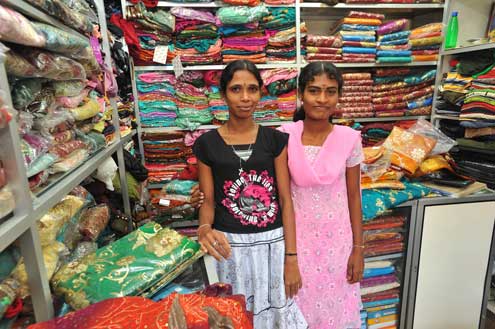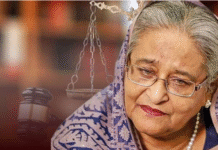By Véronique Salze-Lozac’h and Ka Wai Wong
A report from Oxfam released in late January put down on paper what many already feared was true: almost half of the world’s wealth is now owned by just one percent of the population. This is also the case in Asia, where income and wealth disparity is growing rapidly. Many economists and politicians see this growing disparity as a constraint to further, sustainable economic development as well as a contributing factor to the recent social and political unrest across the region, including Thailand, Cambodia, and Bangladesh.
While Asia has experienced remarkable economic and social gains over the last few decades, with millions being lifted out of poverty, the Asia-Pacific region remains home to two-thirds of the world’s poor. Seven out of 10 people live in countries where economic inequality has increased in the last 30 years. Several of these countries are in Asia.
There is general recognition that economic growth in Asia must be more inclusive to further reduce poverty. But to get there, women must be able to achieve their full economic potential – as the United Nations estimates that the Asia-Pacific economy would grow by an additional $89 billion annually if this were the case. Without women’s participation in the economy, there will be no inclusive growth, and this inclusion cannot happen without the strong role of the private sector, particularly Asia’s small- and medium-sized enterprises (SMEs), which in middle-income countries like Malaysia, Philippines, Thailand, and Indonesia make up between 32-56 percent of the GDP and between 44-64 percent of female labor participation.
Gender equality can promote inclusive growth
Although economic growth does not necessarily promote gender equality, there is strong evidence that the reverse relationship is real. Gender equality and access to economic opportunities for women can promote economic growth and have positive distributional implications. Research shows that greater gender equality and women’s access to education, employment, and business opportunities reduces the likelihood of household poverty. According to UNESCAP estimates, gender discrimination in Asia costs up to $80 billion a year due to restriction on women’s labor market participation and lack of access to schooling.
Women as economic agents and entrepreneurs
The strong role of the private sector and the need for women to act as economic agents and entrepreneurs should not be underestimated. From successful women-run micro SMEs, entrepreneurs, and business leaders, to women workers and employees in sectors such as light manufacturing and garments, women represent a key factor in global economic growth. The World Bank estimates that output per worker would increase from 7-18 percent if women entrepreneurs and employees in the East Asia Pacific region worked in the same sectors as men and had similar access to resources.
In the case of SMEs, constraints faced by women and men are often similar: lack of transparent or stable business regulations and policies, burdensome administrative processes, limited access to finance, poor access to information and technology, and corruption. However, these constraints are even greater for women. For example, according to The Asia Foundation’s recent study that evaluated business environments in Malaysia, Philippines, Thailand, and Indonesia, women business owners were 12 percent less likely to be aware of new technologies that would help them, and 29 percent of women-owned export firms cited application paperwork as a challenge compared to 14 percent of men-owned firms.
The transformative potential of a gender-based inclusive growth strategy
The report identifies critical interventions that are needed to transform the gender-specific constraints that keep women out of the job market, trapped in poorly paid activities, or unable to start or develop their business. Creating a more enabling regulatory environment for both men and women requires action to address discriminatory legislation, such as property or inheritance laws, and new legislation that seeks to level the economic playing field for women and men, such as state support for maternity leave and child care and more gender-specific social protection policies. Enhancing women’s connectivity and capacity through mentoring, networking, and business associations will strengthen their voice in advancing their own needs, interests, and priorities and positively influence reforms and policies changes.
Few can argue Asia’s economic growth in the past decades has been anything short of impressive. Economic growth that has allowed countries in the region to reduce poverty, and for some countries, attain middle-income country status has placed the region as a global competitive force. But much remains to be achieved. The transformative potential of a gender-based, inclusive growth strategy remains to be fully realized. If Asia fails to recognize the need for inclusive growth, in particular increase access to opportunities for women-run SMEs, individual countries and the region as a whole will not live up to their full economic potential, resulting in unfulfilled promises.
Véronique Salze-Lozac’h is The Asia Foundation’s senior director for Economic Development Programs and Ka Wai Wong is the Foundation’s Australian Youth Ambassador for Development both based in Bangkok. They can be reached at veronique.salze-lozach@asiafoundation.org and ka.wong@asiafoundation.org, respectively. The views and opinions expressed here are those of the individual authors and not necessarily those of The Asia Foundation.
Source: AsiaFoundation










